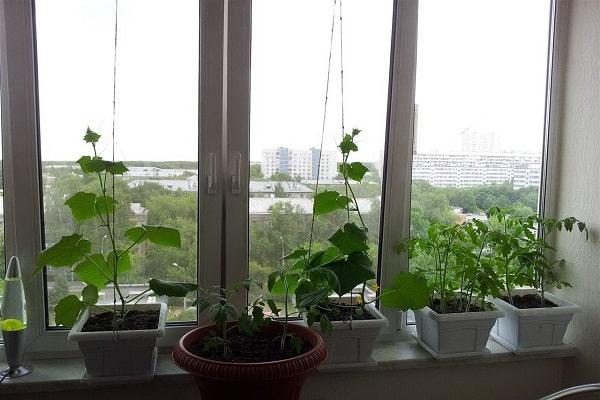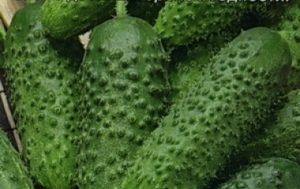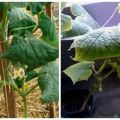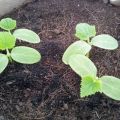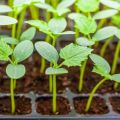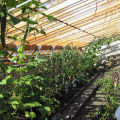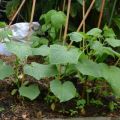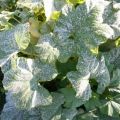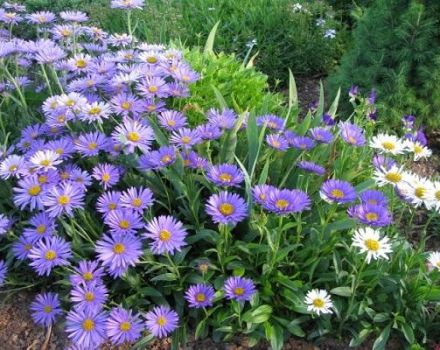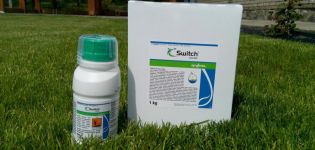Description of the variety of cucumbers Murashka, their characteristics and cultivation
Murashka cucumbers appeared on the Russian market in 2003 and immediately won the hearts of gardeners.
The variety is suitable for growing in greenhouses and in the garden. Produces an excellent harvest with proper care. Consider the characteristics of the variety and recommendations for growing in our climatic zone.
What are the qualities of the Murashka variety
This cucumber is an indeterminate type, that is, it grows indefinitely in length and gives many lateral shoots. Early maturing description of the variety - from planting seeds in the soil to receiving the first fruit, it takes only 40-45 days.
The lash is large with many side shoots. When grown, requires shaping. Up to 6 ovaries grow from one sinus. This plant is parthenocarpic and does not require pollination by bees, so cultivation in greenhouses and greenhouses is ideal. But even in open beds, it gives a good harvest under favorable weather conditions. In greenhouses, up to 12 kilograms of fruit are removed from one bush, on open ground less - 6-7 kilograms.
Zelenets weighs up to 105 grams with a length of 10-12 centimeters. The shape is cylindrical, even, with black tubercles and spines. The color is green, closer to the flower it has light stripes, reaching up to a third of the fruit. The skin is thin and crispy. All cucumbers from the same crop are similar to each other, like twins.
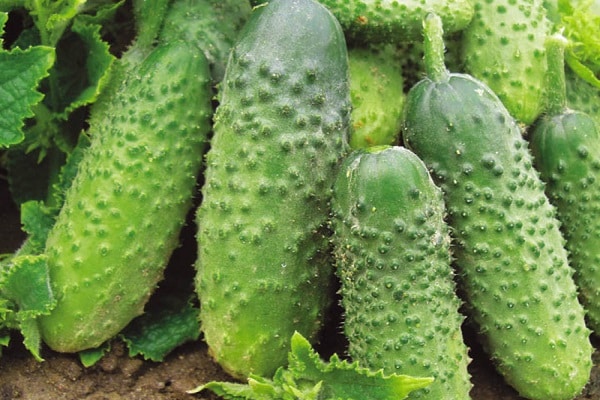
The pulp is juicy. Positive feedback on taste - has a rich cucumber sweet taste and smell. The variety is versatile in use - suitable for sale, long-term storage, salting, pickling, fresh consumption and much more.
Growing features
The variety is indeterminate, parthenocarpic, so it feels better in the greenhouse. To grow an excellent Goosebump cucumber f1, you need to carry out a number of manipulations. Let's start with the seeds.
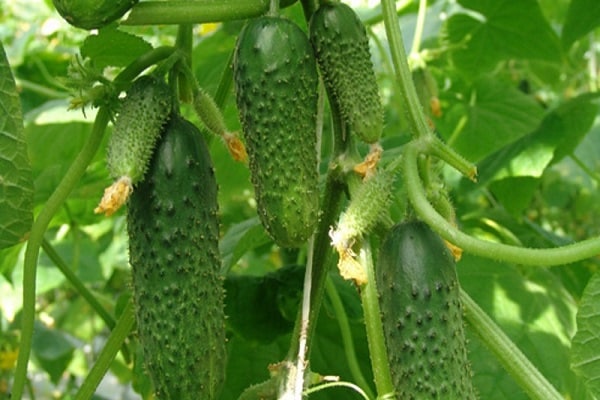
So that the seeds give a good harvest and do not get sick during growth, they are soaked for several hours in a 5% solution of potassium permanganate, washed under running water and dried. Many gardeners germinate seeds before planting in the ground. To do this, put a piece of cloth or gauze in a container, moisten it with warm water and put seeds. The moisture level of the fabric is constantly monitored, the grains should not float in water and dry out.
When they sprout, they are planted in the ground. Some craftsmen plant directly on the garden bed, others grow seedlings, everyone decides for himself.
So, let's germinate the seedlings: for this you need to prepare the soil: mix the garden soil, humus and water it with a mullein. Then we lay out the soil in disposable plastic or peat glasses, pour it with warm water, plant the seeds 1 centimeter deep.Sprinkle everything with earth, put it in a sunny place and make moderate watering until two permanent leaves form on the sprouts.
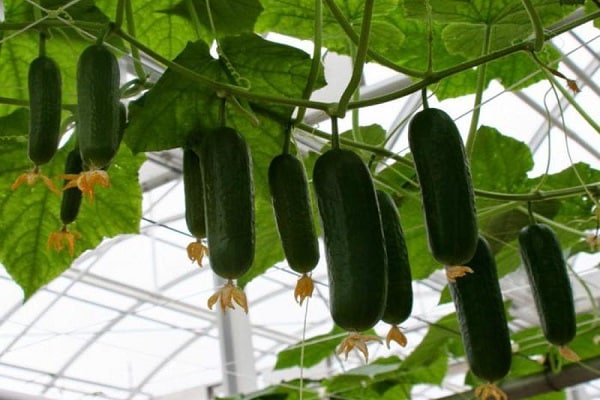
Preparing the soil for planting in a greenhouse or garden bed
To obtain a good harvest of Murashka cucumbers, the soil is prepared in the fall, adding manure to the plowed land. In the spring, when planting, manure is added to the furrows to a depth of 15 centimeters, sprinkled with earth and seeds are planted on this mixture. The manure heats up the soil under the sprouts and they grow well.
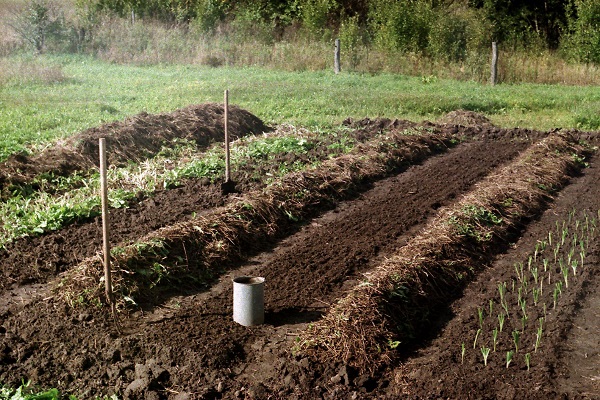
Planting cucumbers in the greenhouse
When planting in a greenhouse, they choose a convenient way for themselves - in a row or in a checkerboard pattern, if the borage will trudge along a trellis or a net, it is recommended to grow seedlings in a row, when the bush is tied from above, a checkerboard pattern is better.
Seeds or seedlings are planted in holes spilled with warm water and covered with earth.

Plant care
After planting, the cucumber seedlings grow and braid. To prevent the lashes from getting tangled with each other, they are tied up or hooked to the trellis. To form a bush, pinch the main stem after 6 leaves, and stepchildren with a length of 40 centimeters from the stem.
During growth, the soil is fertilized 3 times.
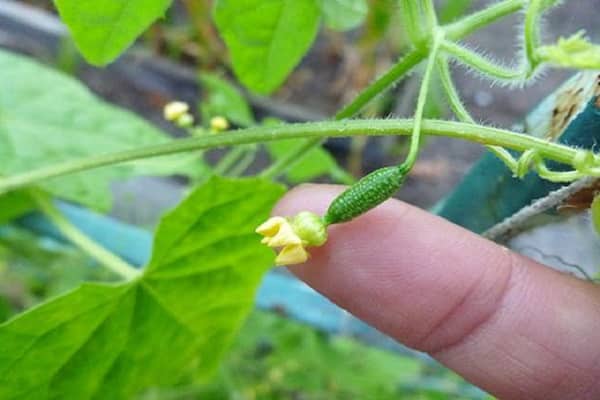
- The first time with manure, in the ratio of one glass of liquid mullein to 10 liters of water, and watered 1 liter of fertilizer under each bush.
- The second time, 1 spoon of superphosphate is added to the mullein solution with water and each bush is also watered.
- The third, using ash - 200 grams per 10 liters of water, the soil is fertilized with this solution before the cucumbers ripen. Half a liter for a bush.
Watering and weeding the beds is a prerequisite for caring for any crop. Watering the gooseberry variety of cucumbers is necessary in the evening, by spraying the entire area of the garden. Loosening will help keep the soil moist longer, and weeding will prevent the weeds from absorbing fertilizer and moisture.
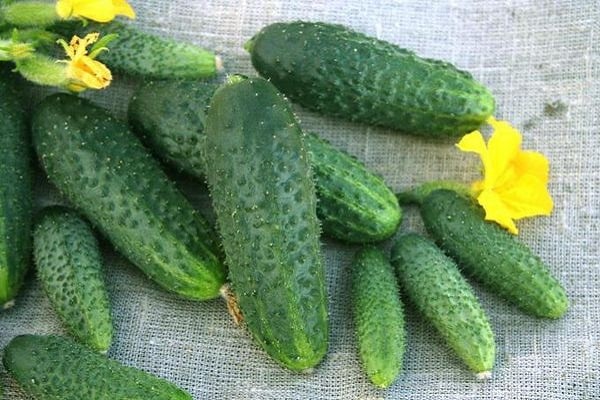
Harvesting
When sowing seeds in the soil in May, the first cucumber will appear in mid or late June, the Murashka variety is early ripening and fruit collection will continue until September in a greenhouse, and at the end of August in an open garden.
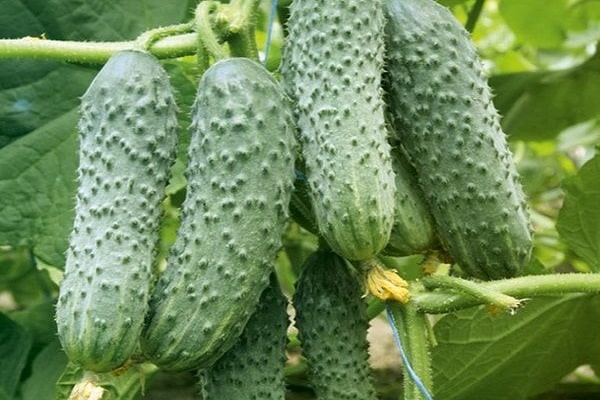
Planting cucumbers at home
Due to its characteristics, the variety also grows well on balconies and houses on the windowsill, despite the branchiness. For planting cucumbers at home, the cultivation time does not depend on the weather conditions outside. With good illumination of the room, they grow a good harvest even in winter. Growing conditions are the same as in a greenhouse. Large containers are selected for planting; for one plant, a 3 liter container is needed. The soil is also fertilized and watered.
If you fulfill all the conditions for caring for the variety, you can grow an excellent harvest of delicious cucumbers at home and in the garden.
